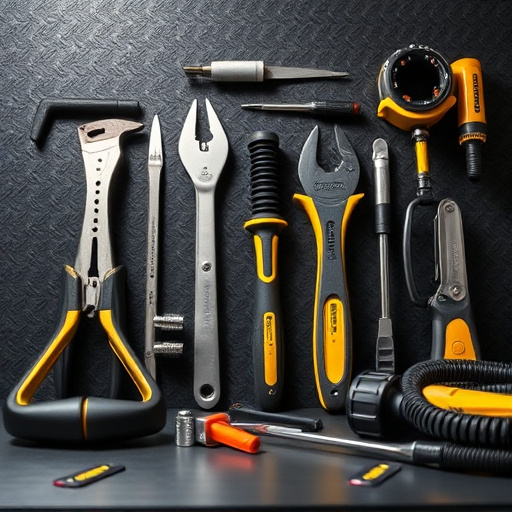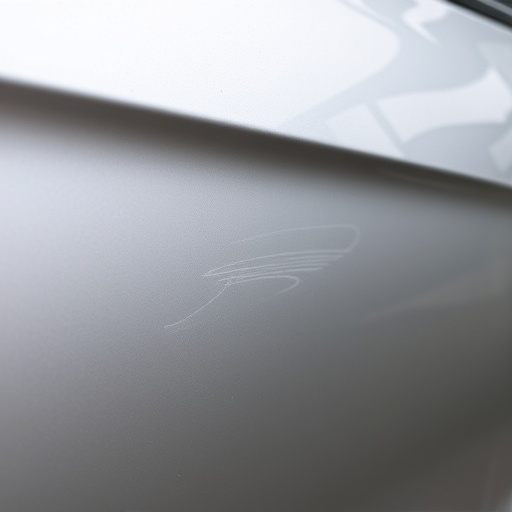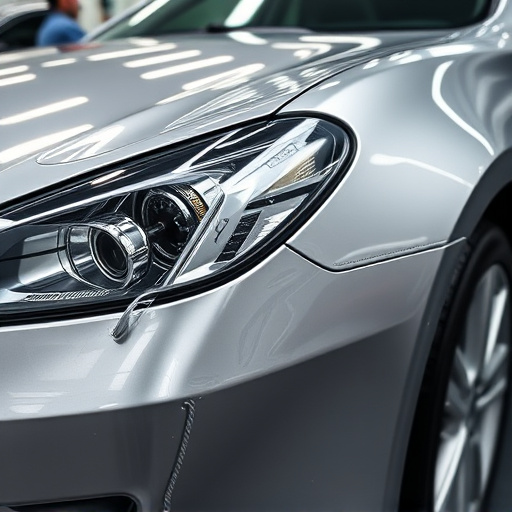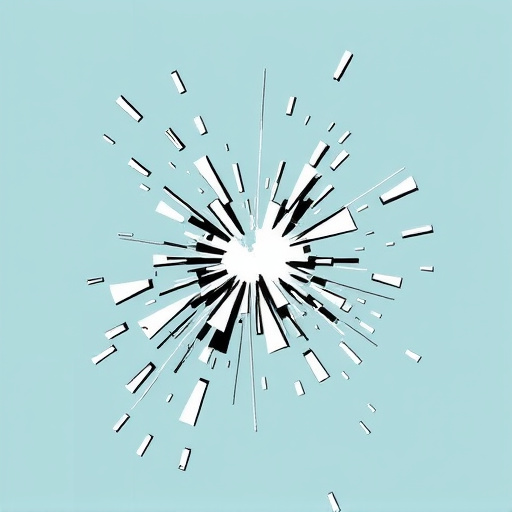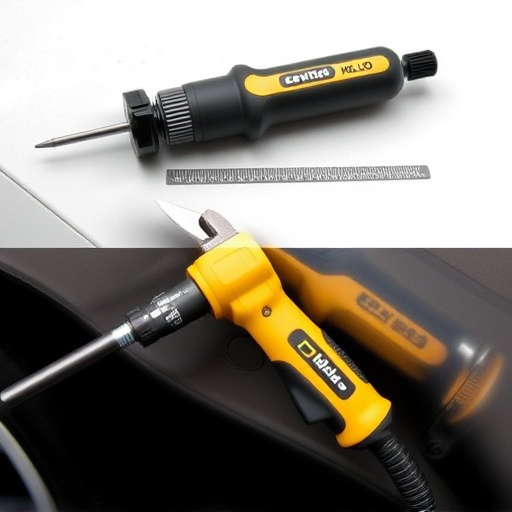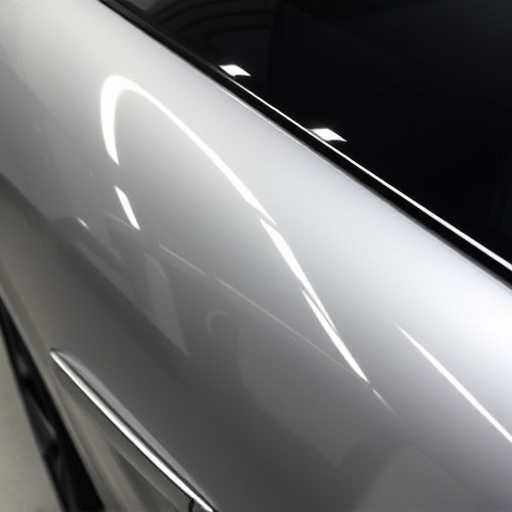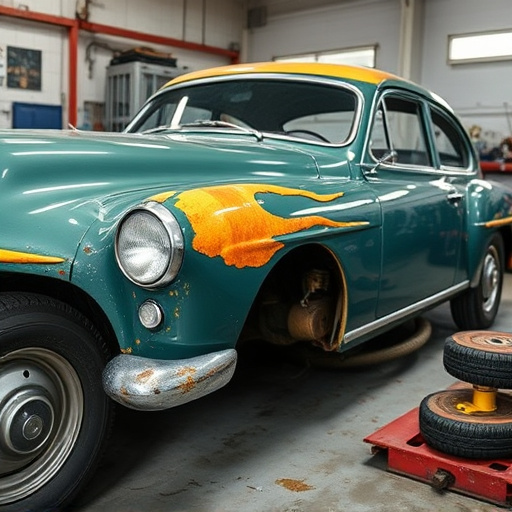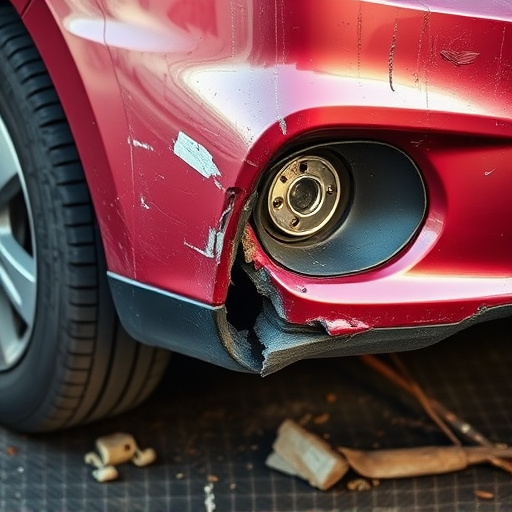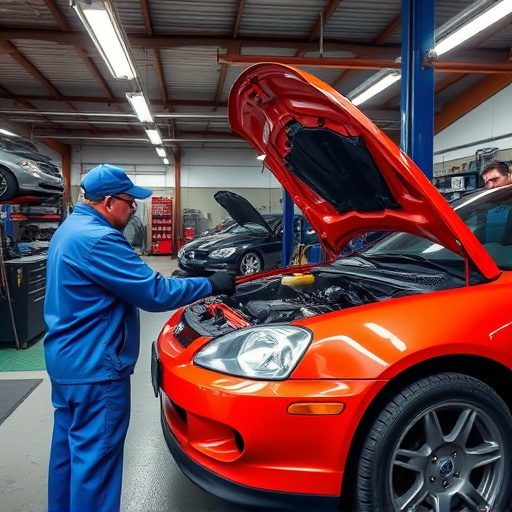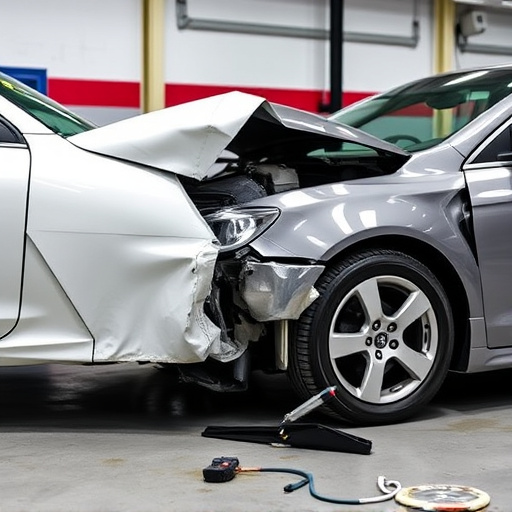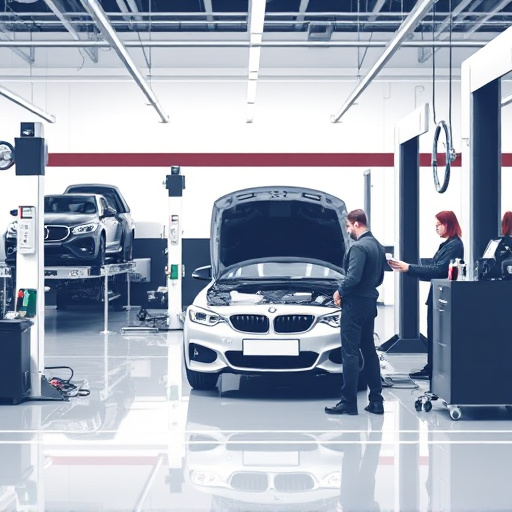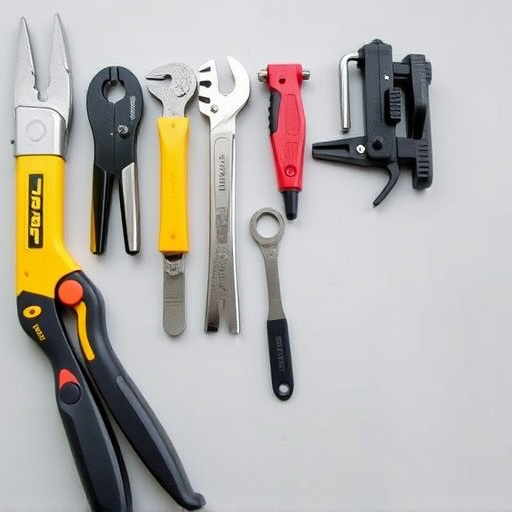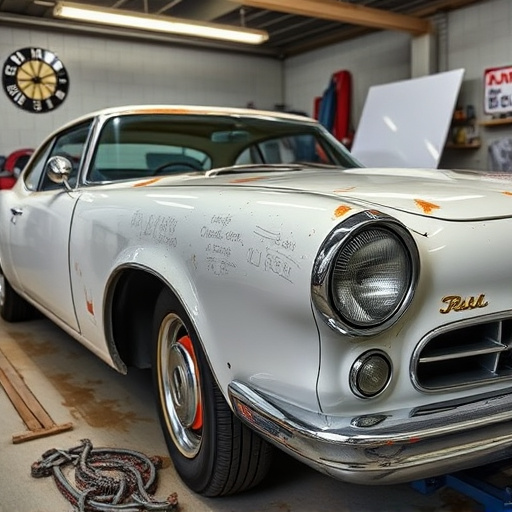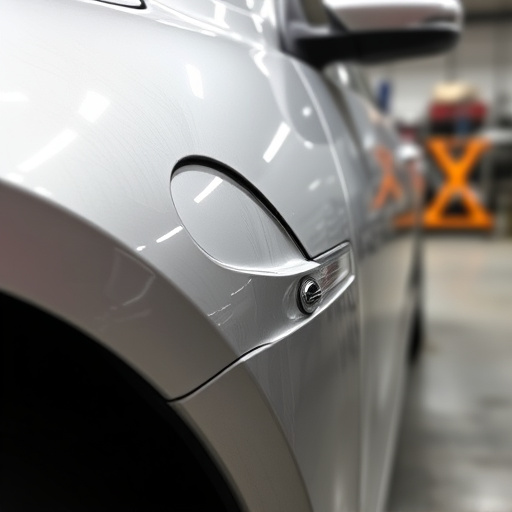A bumper repair kit provides DIY tools for fixing minor dents and scratches on car bumpers, including impact guns, pulling tools, clay bars, putty knives, and paint supplies. The process involves preparing the surface, using a clay bar, applying filler/putty, and repainting with color-matched primer and paint. For best results, select paint that exactly matches the vehicle's original finish, ensure proper preparation through cleaning and sanding, and follow manufacturer guidelines for painting times and temperatures.
When considering a DIY bumper repair, don’t underestimate the importance of having the right supplies. A comprehensive bumper repair kit is your first step, but for a seamless restoration, you’ll likely need additional paint supplies. This article breaks down the essential components of these kits and delves into the various paint materials required to achieve professional-grade results, ensuring your repaired bumper blends in perfectly.
- Understanding Bumper Repair Kit Components
- The Role of Paint Supplies in Restoration
- Matching Colors and Techniques for Optimal Results
Understanding Bumper Repair Kit Components
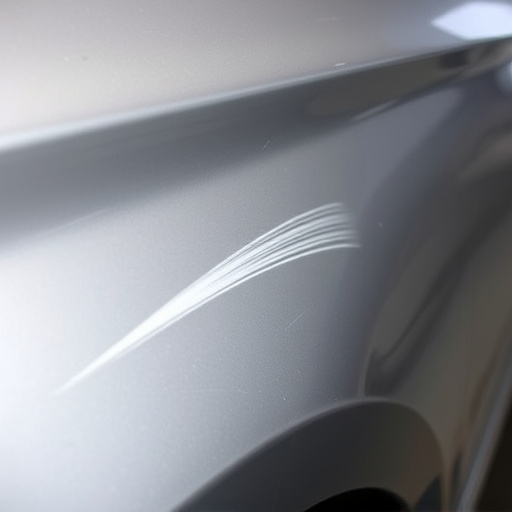
A bumper repair kit is a comprehensive set of tools designed to fix minor dents and scratches on car bumpers, offering an efficient do-it-yourself solution for common automotive damage. These kits typically include various components such as impact guns, pulling tools, clay bars, and putty knives—all essential for removing dents and restoring the bumper to its original condition. Understanding what’s inside is crucial before attempting any repair.
The process often involves several steps: preparing the surface by removing loose debris and using a clay bar to shape and smooth the dented area, followed by applying filler or putty to conceal imperfections. Many kits also come with a range of paint supplies, like primers and paints specific to car bumpers, ensuring a color match when repainting. This is particularly important for those seeking a seamless finish after a fender repair or even a paintless dent repair. Collision repair services often rely on similar tools but at a much larger scale, catering to more severe bumper damage.
The Role of Paint Supplies in Restoration
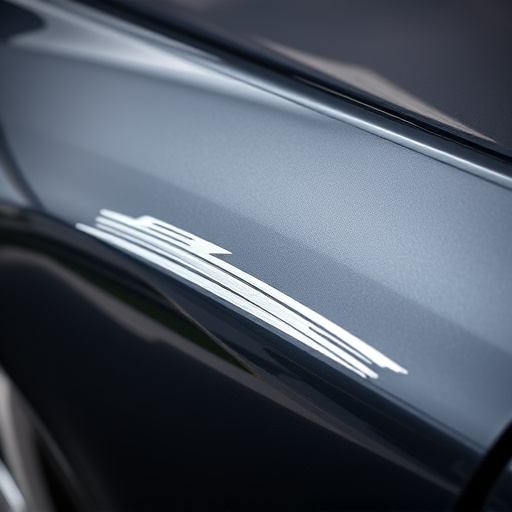
When repairing a bumper using a bumper repair kit, paint supplies play an indispensable role in achieving a seamless restoration. After addressing any dents or damage with the kit’s tools and components, the final step often involves applying new paint to match the vehicle’s original finish. This ensures not only aesthetic appeal but also protects the metal from further corrosion.
A comprehensive bumper repair kit may include various paint supplies such as touch-up paints, primer, and clear coats specifically tailored to the vehicle’s make and model. Proper preparation, including surface cleaning and sanding, is crucial before applying these supplies to ensure a durable and professional finish. Utilizing auto repair services or fender repair techniques in conjunction with the right paint products can significantly enhance the overall quality of the bumper restoration.
Matching Colors and Techniques for Optimal Results
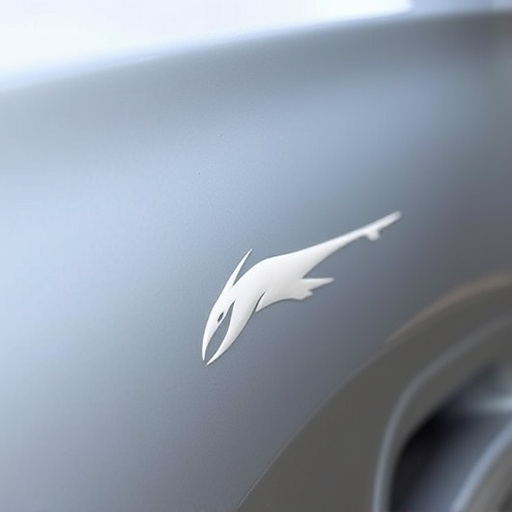
When repairing a bumper with a kit, achieving optimal results hinges on meticulous color matching and understanding dent repair techniques specific to automotive paints. To ensure a seamless fit and appearance, it’s crucial to select paint that precisely matches your vehicle’s original finish. This involves carefully examining the bumper for its unique shade, gloss level, and even minor variations in texture before sourcing the corresponding paint from a reputable supplier. Many bumper repair kits come with primer, but applying an exact match paint layer is essential for long-lasting durability and a professional look.
Techniques for applying the paint vary based on the dent repair method used. Whether it’s a Mercedes Benz collision repair or a more general vehicle restoration, proper preparation is key. This includes sanding and cleaning the repaired area to ensure good adhesion. For best results, follow manufacturer guidelines for painting times and temperatures, allowing each layer to dry thoroughly before applying the next. This meticulous approach ensures that your bumper repair not only looks seamless but also withstands wear and tear, preserving the vehicle’s value.
When repairing your bumper with a kit, remember that achieving a seamless finish may require additional paint supplies. Understanding the components of your bumper repair kit and the importance of matching colors and techniques is key to optimal results. Don’t underestimate the value of quality paint supplies – they can make all the difference in the final restoration.
